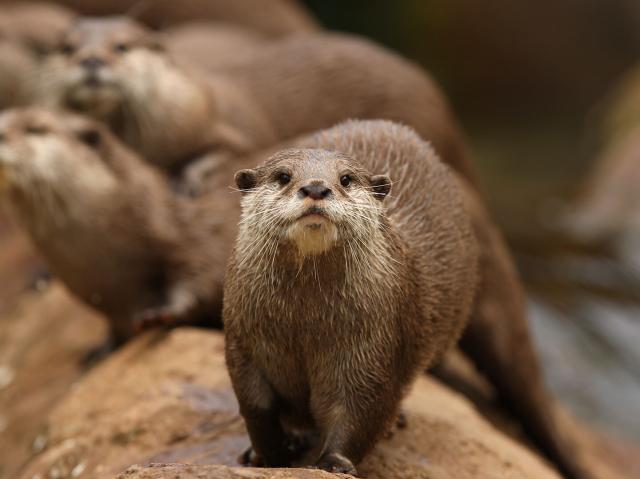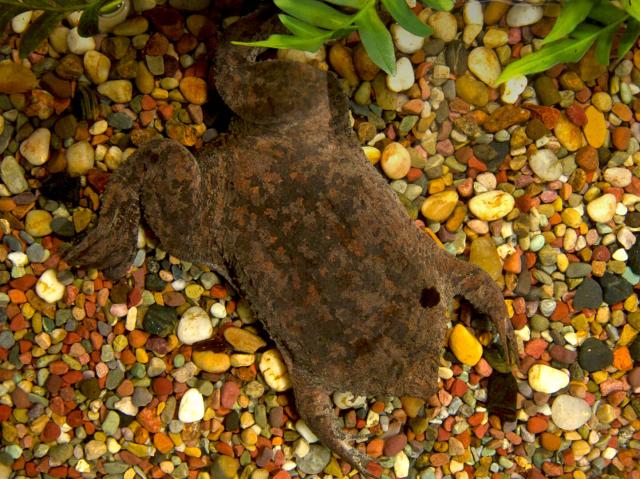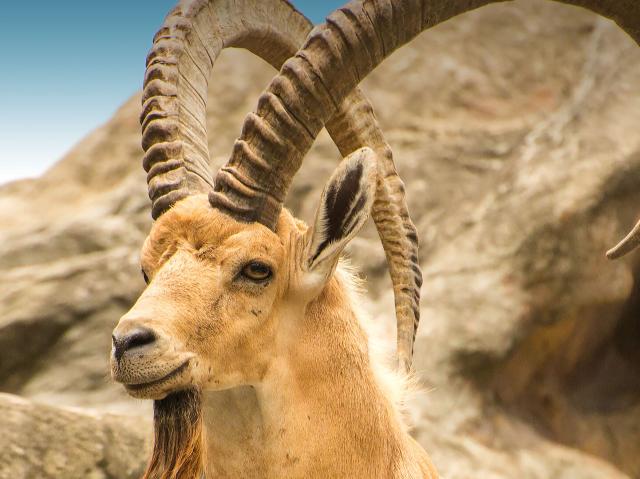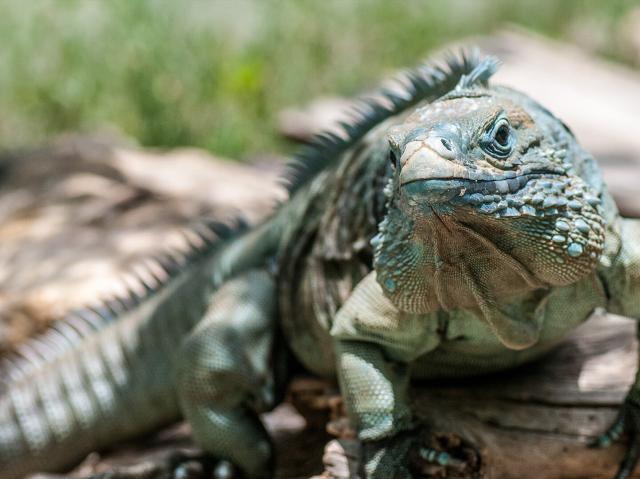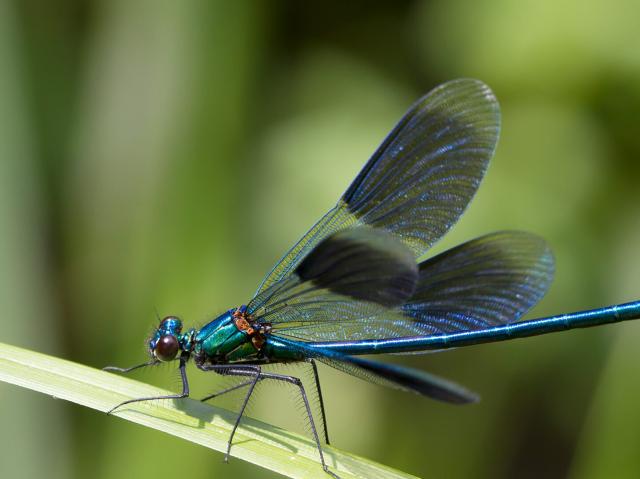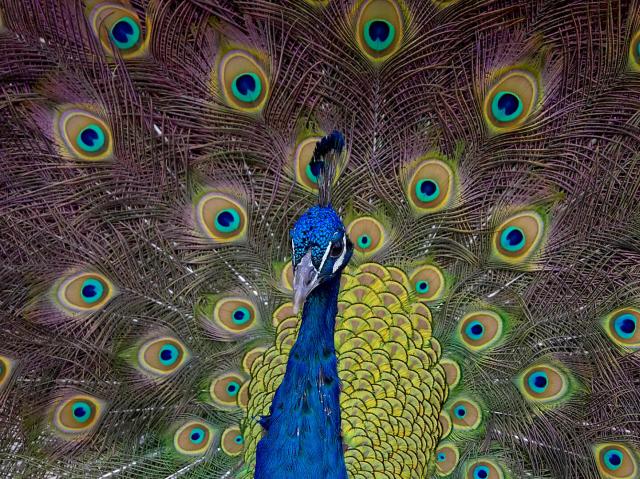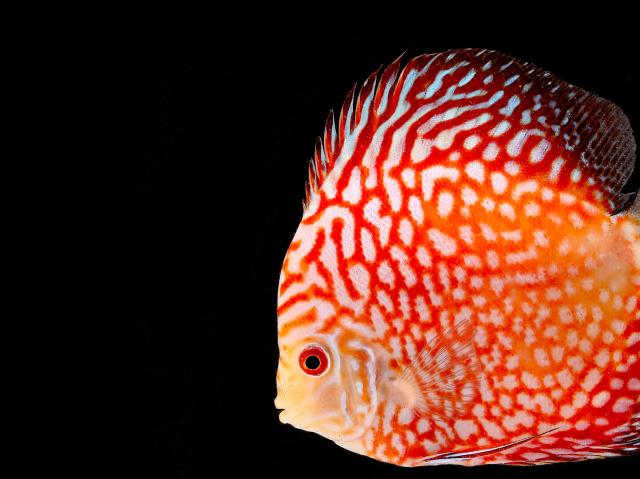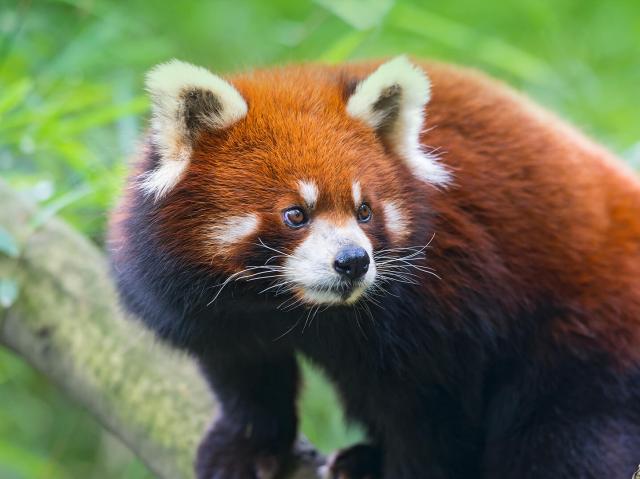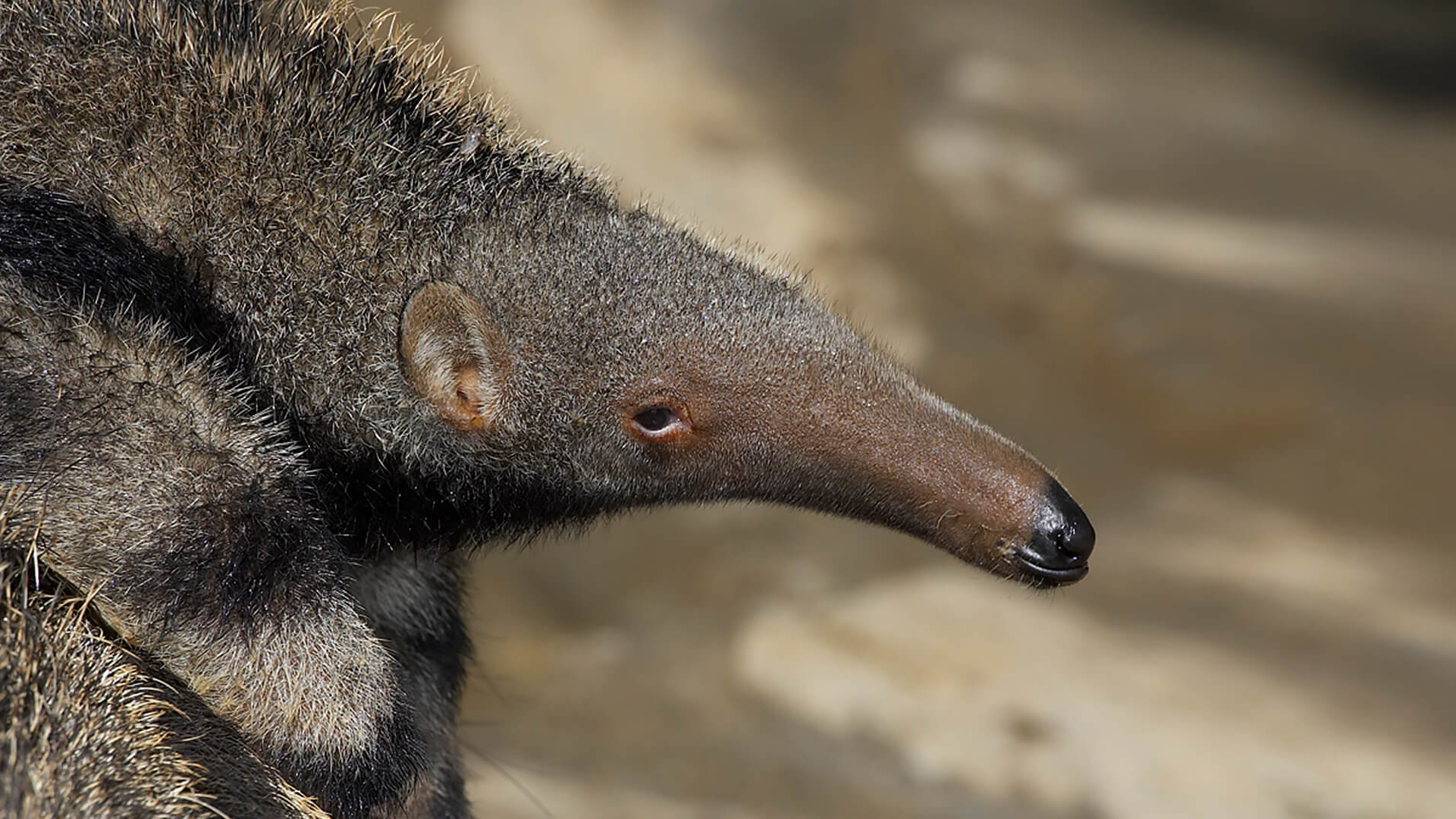
Giant Anteater

- CLASS: Mammalia (Mammals)
- ORDER: Edentata
- FAMILY: Myrmecophagidae
- GENUS: Myrmecophaga
- SPECIES: tridactyla

ABOUT
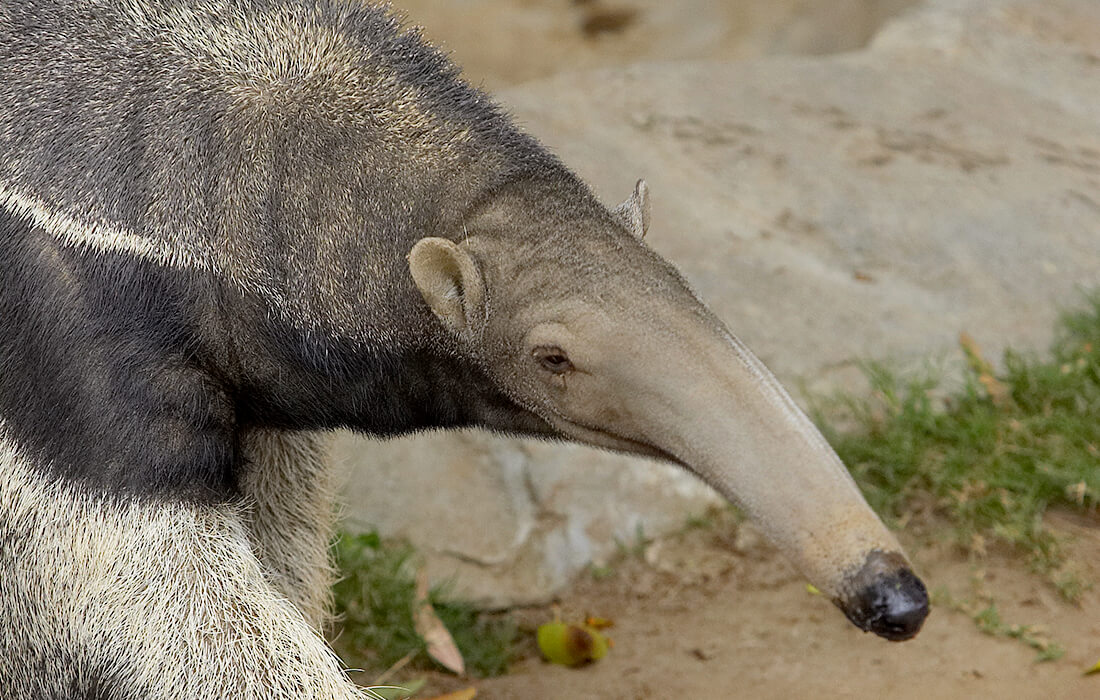
Looks can be deceiving: Its name is a hint to one of its favorite foods, and you can't miss its long snout, but there's more to the story of the giant anteater! This unique animal is the largest of the four anteater species (the others are the silky anteater, the northern tamandua, and the southern tamandua). The giant anteater is about the size of a golden retriever, but thick, bushy hair makes it look even bigger.
The anteater's gray hair feels like straw and grows especially long on the tail (up to 16 inches or 40 centimeters), and it sports a stylish stripe of black that stretches from under the nose to the middle of the back. This stripe is outlined in white, tan, or gray and goes down to a black ring around the base of the front feet. The hairy, bushy tail is often used as a blanket or sunshade. The giant anteater’s elongated head and nose are perfectly designed to get in and out of a termite mound or anthill.
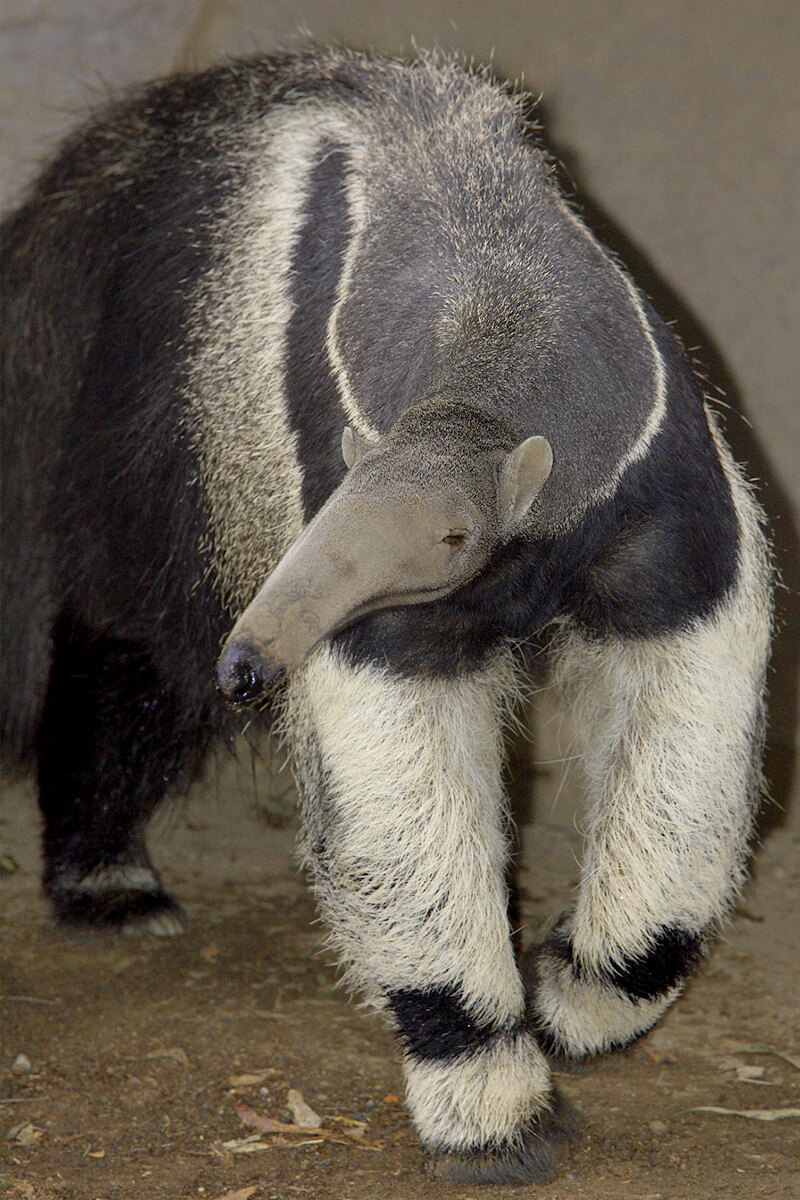
Giant anteaters walk with a slow shuffle on all four legs with their nose pointed to the ground. They don’t walk on their feet; instead, with the claws curled up into the feet, anteaters walk on their "fists." This helps to keep the claws sharp so anteaters can dig into ant mounds or defend themselves from predators. Anteaters are also good swimmers, using the freestyle stroke and with their long snout as a snorkel.
HABITAT AND DIET
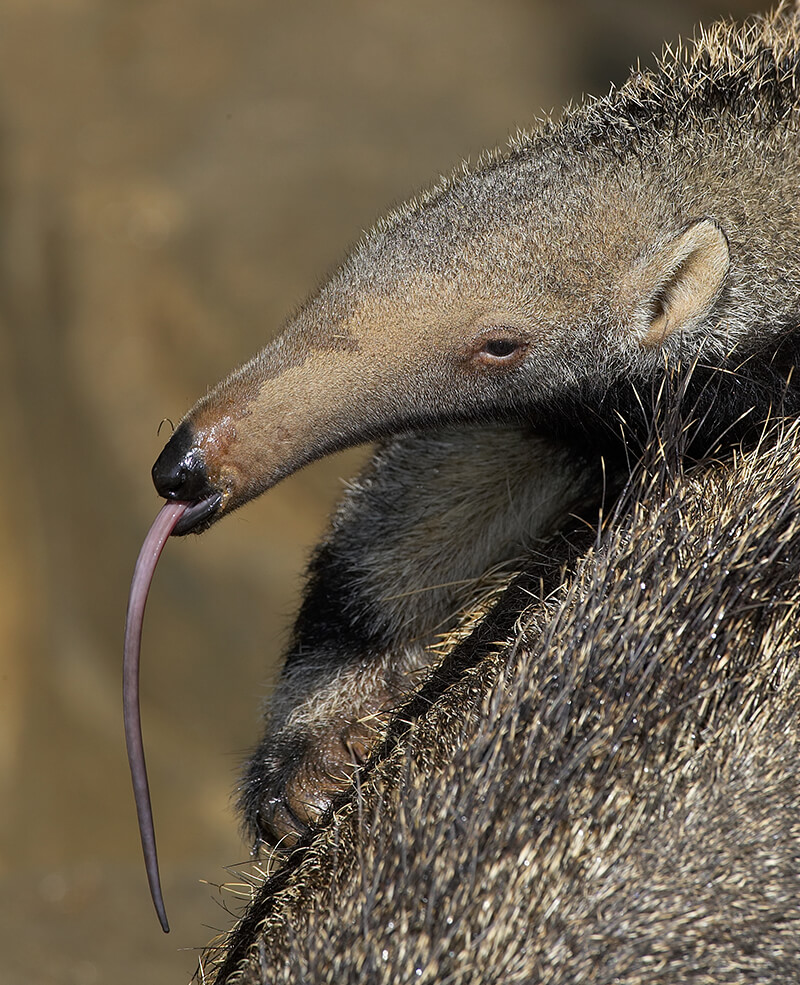
Can you imagine eating nothing but ants all day long? Giant anteaters have no teeth, but a specialized tongue allows them to eat up to 30,000 ants and termites each day.
Giant anteaters range from Honduras in Central America to the Gran Chaco region of Bolivia in South America, and are found in tropical and dry forests, savannas, and grasslands. These animals are perfectly designed to feed on ants, which is great, because ants are a very reliable food source. The anteater's narrow tongue is about 2 feet (60 centimeters) long and is shaped like a strand of spaghetti. This amazing tongue has teeny, backward-pointing spines covered in sticky saliva that aid in feeding. Relying on its acute sense of smell, the giant anteater detects an ant mound and swiftly rips into it with its sharp, formidable claws. It then darts its tongue inside (up to 150 times per minute!), picking up the worker ants with that sticky saliva.
The anteater only feeds at one mound for about a minute before moving on. After all, the animal doesn't want to totally wipe out its source of food! With a mouthful of delicious insects, the anteater crushes them against the roof of the mouth, and its very muscular stomach further pulverizes the food. Anteaters may also lick at fallen fruit and eat soft grubs.
FAMILY LIFE
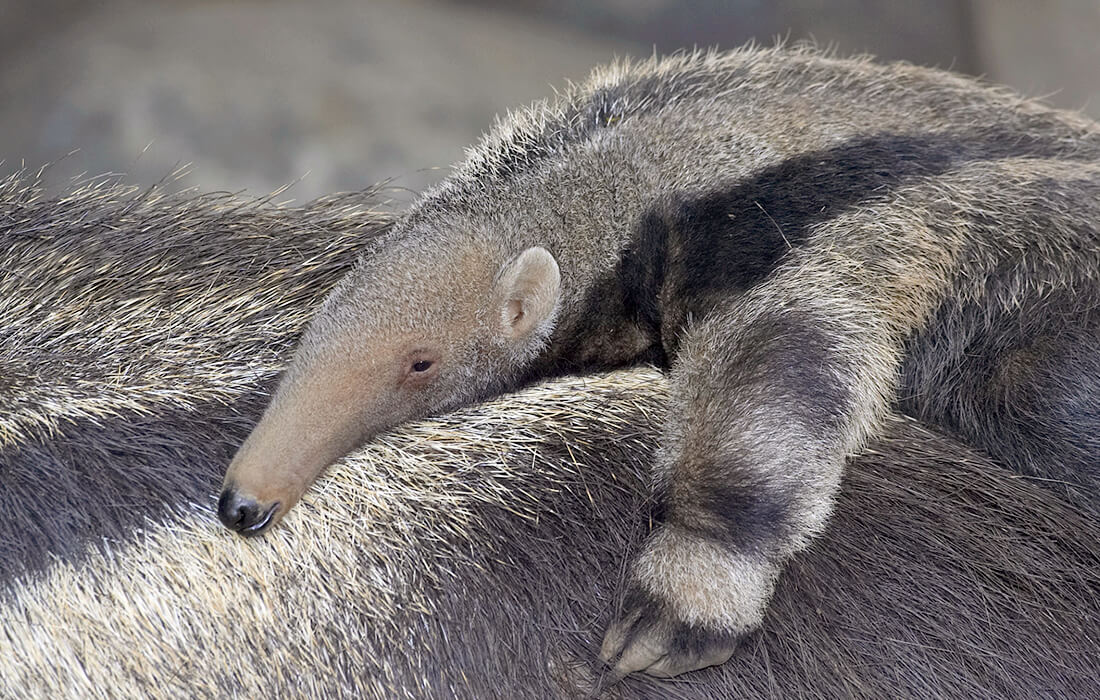
Giant anteaters are usually solitary mammals, but do come together to mate and raise their young. In the wilderness, they breed between March and May but are more flexible under managed care and may mate at any time of the year. An adult female giant anteater gives birth to a single baby (twins are rare) while in a standing position, propped up by her strong tail. When a pup (baby) is born, it has a full coat of hair and is almost identical to the adult. The pup spends the first year of life hitching a ride on its mother's back; similar coloring helps the pup blend in so predators can't see it. It also makes the mother look larger and less tempting to predators.
For the first four weeks of its life, the pup never leaves its mother. While she lies on her side, the baby tucks itself underneath her front legs to nurse for up to an hour at a time, drinking about 10 percent of its body weight each day. When the mother gets up to walk around, the baby scurries up her back and goes along for the ride. Giant anteaters do not vocalize much, but the pup can let out a shrill, high-pitched grunt to alert Mom when in distress. After the first month, the pup begins to spend more time on the ground, although it still rides on the mother’s back quite frequently. The pup is usually weaned at about nine months of age and leaves its mother when it is full grown, at about two years of age.
Giant anteater pups have a 50 percent mortality rate in the first three months of life. They are very susceptible to pneumonia and other health-related problems.
CONSERVATION
Giant anteaters are not endangered yet, but they have already disappeared from much of their habitat due to habitat loss, especially from fires in grassland regions, and hunting, both for food and as pests. Vehicles often hit the animals while they lumber across a road, and they also get killed by pet dogs. It is estimated that only 5,000 giant anteaters are left in the wilderness, while a small number (around 90) live in zoos in the US.
Giant anteaters have been around for 25 million years, and we hope that they can nose their way into the next million. By supporting San Diego Zoo Wildlife Alliance, you are our ally in saving and protecting wildlife worldwide.
LIFE SPAN
Median life expectancy is 10.5 years for females, 14.8 years for males
YOUNG
Gestation: About 190 days
Number of young at birth: Usually 1
Weight at birth: 3 pounds (1.4 kilograms)
Age of maturity: 2 to 3 years
SIZE
Length: 40 to 48 inches (100 to 120 centimeters)
Weight: 60 to 140 pounds (27 to 64 pounds; males are heavier than females
Tail length: 28 to 35 inches (70 to 90 centimeters)
FUN FACTS
The giant anteater's sense of smell is 40 times more powerful than ours.
A giant anteater is not immune to ant bites, so it feeds at an ant or termite colony for just a minute or so before moving on.
Giant anteaters have one of the lowest body temperatures for a mammal, 91 degree Fahrenheit (32.7 degrees Celsius), presumably in response to their low-calorie insect diet.



